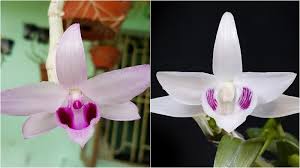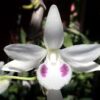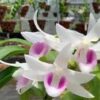# Techniques for Tissue Culture in Propagating Phalaenopsis Orchids

Phalaenopsis orchids, commonly known as moth orchids, are among the most popular orchids worldwide due to their stunning blooms and ease of care. As demand for these exquisite flowers continues to grow, so does the need for effective propagation methods. Tissue culture, a sophisticated biotechnological technique, has emerged as a key method for propagating Phalaenopsis orchids, allowing for mass production, disease elimination, and the preservation of genetic traits. This comprehensive guide explores the various techniques involved in the tissue culture of Phalaenopsis orchids, covering everything from the fundamentals of plant tissue culture to the specific methods and protocols used in orchid propagation.
## 1. Understanding Plant Tissue Culture
### 1.1 What is Tissue Culture?
Tissue culture, also known as micropropagation, is a technique that involves growing plant cells, tissues, or organs in a controlled, sterile environment on nutrient media. This method allows for the rapid multiplication of plants, enabling the production of large quantities of identical clones from a single parent plant.
### 1.2 Importance of Tissue Culture in Orchid Propagation
Tissue culture plays a crucial role in the propagation of orchids for several reasons:
– **Mass Production**: Tissue culture allows for the rapid production of thousands of plants from a single explant, making it possible to meet the high demand for Phalaenopsis orchids in the market.
– **Disease Control**: The tissue culture process can help eliminate pathogens that may be present in the parent plant, resulting in healthier, disease-free plants.
– **Genetic Consistency**: Tissue culture produces clones that retain the genetic characteristics of the parent plant, ensuring that desirable traits are preserved in the new plants.
– **Conservation**: Tissue culture techniques can aid in the conservation of rare and endangered orchid species, enabling their propagation and preservation.
## 2. The Process of Tissue Culture
The tissue culture process can be broken down into several key stages, each of which plays a vital role in the successful propagation of Phalaenopsis orchids.
### 2.1 Selection of Plant Material
The first step in tissue culture is selecting healthy plant material, known as the explant. For Phalaenopsis orchids, common explant sources include:
– **Leaf Segments**: Healthy leaf tissues can be used for propagation.
– **Flower Buds**: Flower buds can also serve as explants, as they contain undifferentiated cells that can develop into new plants.
– **Node Segments**: Nodes, the points on a stem where leaves attach, are rich in meristematic tissue and are ideal for propagation.
### 2.2 Preparation of Explants
Once the explant has been selected, it must be prepared for tissue culture. This involves:
– **Sterilization**: The explant must be sterilized to eliminate surface pathogens. Common methods include rinsing with a bleach solution, followed by rinsing with sterile water.
– **Trimming**: The explant is trimmed to remove any damaged or discolored areas, ensuring that only healthy tissue is used for culture.
### 2.3 Culture Media Preparation
The next step involves preparing the culture media, which provides the necessary nutrients for the growth and development of the orchid tissue.
#### 2.3.1 Nutrient Composition
The culture media for Phalaenopsis orchids typically includes:
– **Macronutrients**: Essential elements such as nitrogen, phosphorus, and potassium are required for growth.
– **Micronutrients**: Trace elements, including iron, manganese, and zinc, are necessary for proper plant development.
– **Vitamins**: B vitamins, such as thiamine and niacin, are often included to support tissue growth.
– **Sucrose**: A sugar source that provides energy for the growing tissues.
– **Agar**: A gelling agent that solidifies the media, providing a stable environment for the explants.
#### 2.3.2 pH Adjustment
The pH of the culture media is critical for nutrient availability. It is typically adjusted to a range of 5.5 to 6.5 using pH buffers.
### 2.4 Inoculation of Explants
After preparing the culture media, the next step is inoculating the explants. This involves:
– **Placing Explants on Media**: The sterilized explants are placed on the surface of the culture media in sterile containers, such as Petri dishes or culture jars.
– **Sealing**: The containers are sealed to maintain a sterile environment and prevent contamination.
### 2.5 Incubation Conditions
The inoculated containers are placed in a controlled environment to promote growth. Key factors to consider include:
– **Light**: Phalaenopsis orchids require bright, indirect light for optimal growth. The use of fluorescent or LED grow lights can provide the necessary light conditions.
– **Temperature**: A temperature range of 25°C to 30°C (77°F to 86°F) is ideal for tissue culture growth.
– **Humidity**: High humidity levels (around 60% to 80%) are crucial during the initial stages of growth to prevent desiccation.
### 2.6 Subculturing
As the explants begin to grow, subculturing is often necessary to promote further development. This involves transferring the growing tissues to fresh culture media to provide additional nutrients and space for growth.
– **Frequency**: Subculturing is typically done every 4 to 6 weeks, depending on the growth rate of the tissue.
– **Asexual Propagation**: During subculturing, new shoots or plantlets can be induced to form from the explants, allowing for mass propagation.
### 2.7 Root Development
Once the plantlets have developed shoots, the next step is to encourage root formation. This can be achieved by transferring the plantlets to a rooting medium, which is often lower in nutrients and supplemented with rooting hormones.
– **Auxins**: Plant hormones such as indole-3-butyric acid (IBA) are commonly used to stimulate root growth.
– **Humidity and Light Conditions**: Maintaining high humidity and appropriate light conditions during this stage is crucial for successful rooting.
### 2.8 Acclimatization
After successful root development, the newly formed plantlets must be acclimatized to the external environment. This involves gradually introducing them to lower humidity levels and more intense light conditions.
– **Transitioning**: Plantlets are typically placed in a humid environment for a few weeks, then gradually exposed to lower humidity and normal light conditions.
– **Potting**: Once acclimatized, the young plants can be potted in suitable growing media, such as a mix of bark, sphagnum moss, and perlite.
## 3. Advantages of Tissue Culture for Phalaenopsis Orchids
### 3.1 High Propagation Rates
Tissue culture allows for rapid multiplication of Phalaenopsis orchids, enabling growers to produce large quantities of plants in a relatively short period.
### 3.2 Disease Elimination
Through the tissue culture process, potential pathogens can be eliminated, resulting in healthier plants. This is particularly important in orchid cultivation, where diseases can spread rapidly.
### 3.3 Preservation of Genetic Traits
Tissue culture ensures that desirable traits of the parent plant are preserved in the new plants, making it an ideal method for maintaining genetic consistency.
### 3.4 Conservation of Rare Species
Tissue culture techniques can be employed to propagate rare and endangered orchid species, contributing to their conservation and preservation.
## 4. Challenges in Tissue Culture
### 4.1 Contamination
One of the main challenges in tissue culture is the risk of contamination from bacteria, fungi, or other pathogens. Maintaining a sterile environment is crucial to prevent contamination.
### 4.2 Growth Conditions
Providing the optimal conditions for growth can be challenging, as different species and cultivars may have varying requirements for light, temperature, and humidity.
### 4.3 Slow Growth Rates
Although tissue culture allows for mass propagation, the initial growth of explants can be slow. Patience and careful management are required during the early stages.
### 4.4 Skill and Expertise
Successful tissue culture requires a certain level of skill and expertise in laboratory techniques, as well as knowledge of plant physiology and biochemistry.
## 5. Conclusion
Tissue culture is a powerful and effective method for propagating Phalaenopsis orchids, enabling the mass production of these beautiful plants while ensuring disease control and genetic preservation. By understanding the various techniques involved in tissue culture, orchid enthusiasts and commercial growers can successfully propagate Phalaenopsis orchids, contributing to the continued popularity and availability of these stunning flowers. As advancements in biotechnology continue to evolve, the future of orchid propagation looks promising, with tissue culture playing a central role in the sustainable cultivation of Phalaenopsis orchids and other orchid species.

